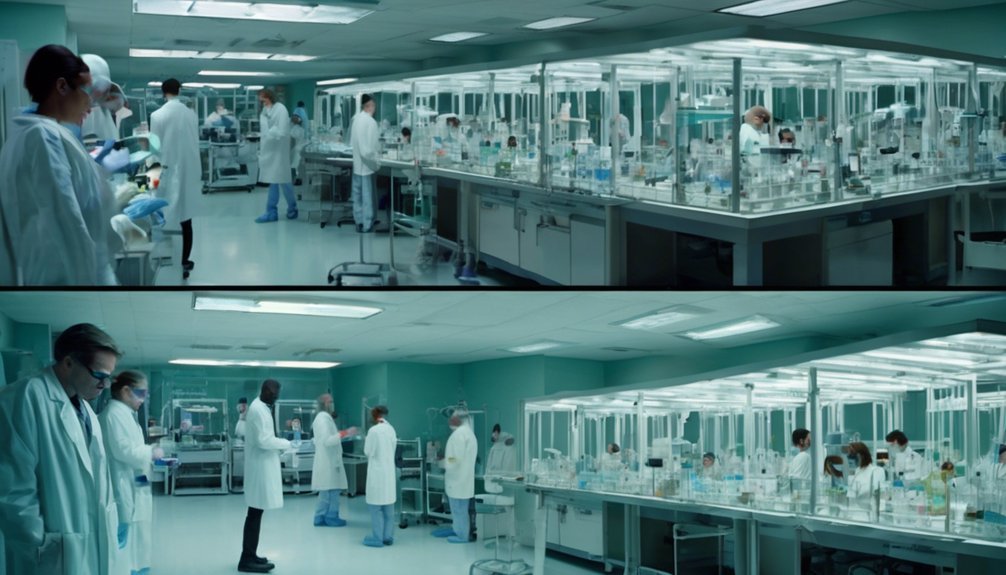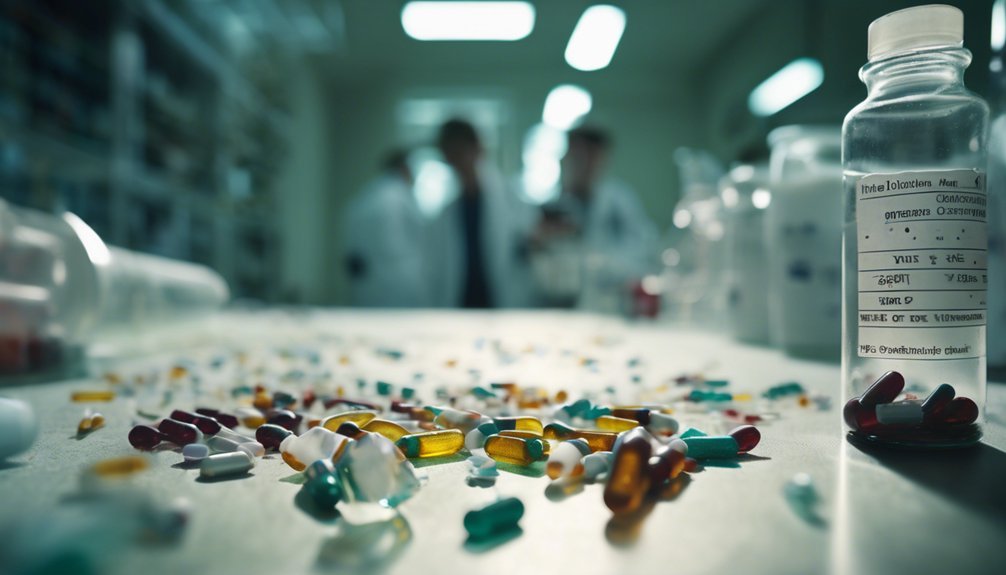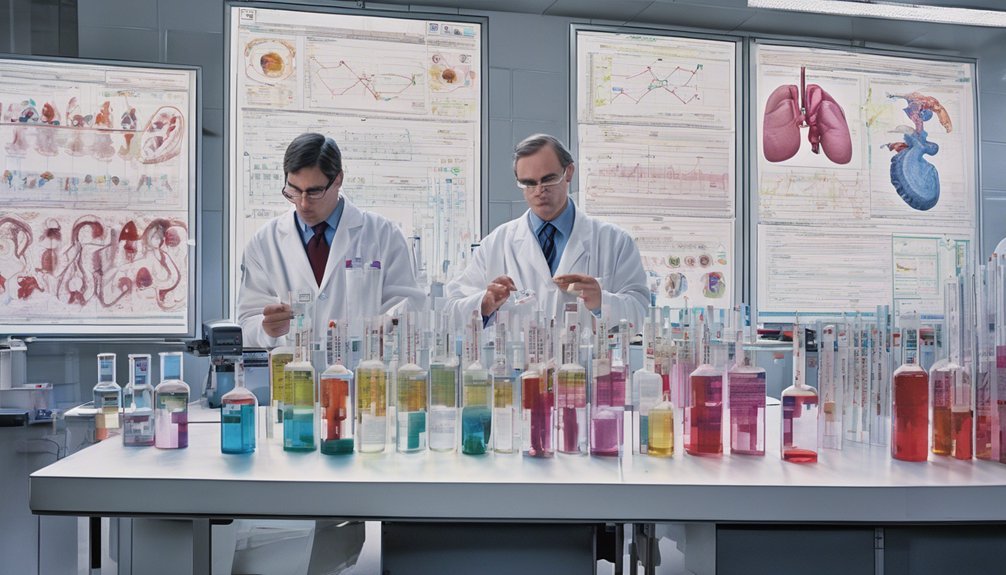You’ve likely encountered the frustrating reality that many drugs successful in preclinical trials fail in human applications. This disconnect stems from significant biological differences between humans and animal models, along with variable patient responses and challenges in drug formulation. Understanding these translational roadblocks is crucial for improving drug development. What factors truly hinder this process, and how can researchers bridge this gap to enhance therapeutic success?
Key Takeaways
- Species-specific biological differences can lead to inaccurate predictions of drug metabolism and efficacy in humans compared to animal models.
- Metabolic pathways in rodents significantly differ from humans, complicating the translation of preclinical success to human therapies.
- The complexity of human diseases is often not fully replicated in animal models, resulting in a gap in disease modeling.
- Genetic variability among patients contributes to differing responses to medications, challenging the effectiveness of treatments developed from preclinical studies.
- Regulatory hurdles and clinical trial design issues can hinder the transition from successful preclinical outcomes to approved human drugs.
Differences Between Human and Animal Biology

While animal models are crucial in preclinical drug development, significant differences between human and animal biology often hinder the translation of findings to human patients.
For instance, species-specific differences in anatomy and physiology can lead to variances in drug absorption, distribution, metabolism, and excretion. These metabolic variations complicate the prediction of human responses to therapeutic agents.
Species-specific differences in anatomy and physiology can significantly affect drug absorption, distribution, metabolism, and excretion, complicating human response predictions.
For example, a drug that shows promise in rodents may metabolize differently in humans, impacting efficacy and safety.
Understanding these biological discrepancies is essential for researchers aiming to develop effective treatments.
Limitations of Preclinical Models
The differences in human and animal biology highlight the limitations of preclinical models in drug development. While these models are crucial for preclinical validation, they often fail to accurately predict human responses.
Model selection plays a significant role; using species that don’t share essential physiological traits can lead to misleading results. For instance, while mice are commonly used, their metabolic pathways differ considerably from humans, affecting drug efficacy and safety.
Furthermore, the complexity of human diseases, including genetic, environmental, and lifestyle factors, isn’t fully replicated in animal models. This gap can result in a false sense of security regarding a drug’s potential, underscoring the need for more sophisticated, human-relevant approaches in preclinical research to better serve patient needs.
Variability in Patient Responses
As drug developers pursue effective therapies, they must grapple with the significant variability in patient responses to medications. Individual genetic differences play a crucial role in how patients respond, making it essential to prioritize biomarker identification. Understanding these variations can lead to more tailored treatments and improved outcomes.
| Patient Group | Genetic Variants | Response to Treatment |
|---|---|---|
| Group A | Variant X, Y | 80% effective |
| Group B | Variant Z | 40% effective |
| Group C | No significant variants | 60% effective |
Challenges in Drug Formulation and Delivery

Despite advancements in pharmacology, drug formulation and delivery still present significant challenges that can hinder therapeutic effectiveness. You’ll often encounter issues related to drug stability, which can affect the shelf life and efficacy of treatments.
Utilizing appropriate formulation techniques is crucial to ensure optimal solubility and stability. Additionally, selecting effective delivery methods can be complicated by bioavailability challenges, where a drug’s absorption may be limited in the body.
Excipient interactions might also alter the pharmacokinetics, impacting how the drug is released and absorbed. Understanding release kinetics is essential to designing formulations that ensure a predictable therapeutic effect.
Overcoming these hurdles is vital for developing effective therapies that truly benefit patients in clinical settings.
Regulatory Hurdles and Clinical Trial Design
Navigating regulatory hurdles and designing effective clinical trials are critical steps in drug development that can significantly impact a therapy’s trajectory.
Understanding the regulatory processes is essential; they dictate how you prepare your investigational new drug application and clinical trial protocols. Compliance with clinical guidelines ensures that your trial adheres to ethical standards and scientific rigor, which can influence approval outcomes.
You’ll need to carefully consider patient recruitment strategies, endpoints, and data collection methods to meet regulatory expectations. Moreover, engaging with regulatory agencies early can clarify requirements, potentially streamlining the approval process.
Frequently Asked Questions
How Do We Determine the Effectiveness of Preclinical Models?
To determine preclinical model effectiveness, you’ll assess preclinical validation through rigorous data analysis. Model selection should align with research goals, ensuring relevance and reliability, which ultimately aids in translating findings to human applications.
What Role Does Funding Play in Drug Development Success?
Funding plays a crucial role in drug development success. By diversifying funding sources and employing strategic investment strategies, you can enhance research capacity, increase innovation, and ultimately improve the chances of bringing effective treatments to those in need.
How Can Patient Diversity Be Better Represented in Trials?
To better represent patient demographics in trials, you should prioritize inclusive recruitment strategies, ensure diverse participation, and analyze data for underrepresented groups. This approach enhances trial representation and ultimately leads to more effective treatments for everyone.
What Happens to Drugs That Fail in Human Trials?
When drugs stumble in human trials, they often become stepping stones. You might explore drug repurposing strategies or confront trial design challenges, aiming to learn from failures and enhance future therapeutic developments for patient benefit.
How Can Researchers Improve Translational Success Rates?
To improve translational success rates, you should focus on biomarker identification and model optimization. These strategies enhance predictive accuracy, ensuring that preclinical findings translate effectively to human applications while serving the needs of patients more reliably.
Conclusion
In navigating the complexities of drug development, it’s crucial to recognize that preclinical success doesn’t guarantee human efficacy. The biological disparities between species, coupled with patient variability and formulation challenges, create a labyrinth of translational roadblocks. Each promising finding in the lab can coincide with a sobering reality in clinical trials. By addressing these issues with precision and adaptability, we can enhance the chances of translating scientific breakthroughs into effective therapies for patients in need.




